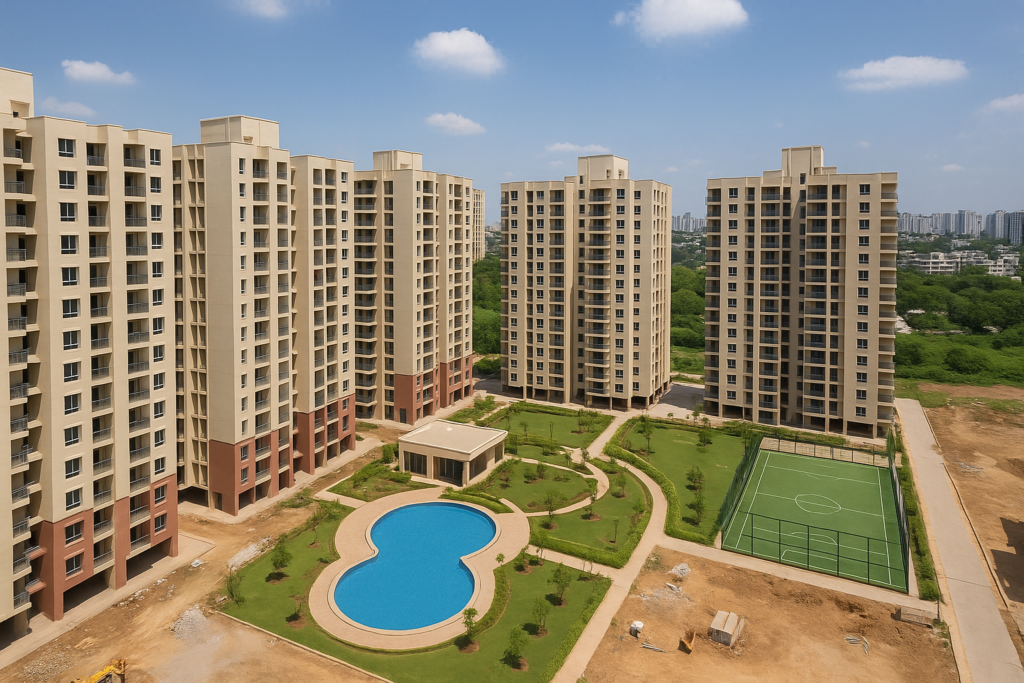
Apartment loading hits 40% in top Indian cities (Photo for representation: AI generated)
The average apartment loading factor—the difference between super built-up area and carpet area—has surged to 40% across India’s top seven cities in the first quarter of 2025, up from 31% in 2019, according to new research by ANAROCK Group. This means homebuyers now pay for 40% more space that is common or shared, such as lobbies, lifts, clubhouses, and amenities, rather than actual livable carpet area.
Mumbai Metropolitan Region leads with highest loading
The Mumbai Metropolitan Region (MMR) continues to top the list with the highest loading factor at 43%, up from 33% in 2019 and 39% in 2022. For example, a 1,000 sq ft flat in MMR now offers less than 600 sq ft of usable space, with the rest accounted for by shared facilities and infrastructure.
Bengaluru records sharpest rise
Bengaluru has seen the steepest increase in loading over the past seven years, jumping from 30% in 2019 to 41% in Q1 2025. This reflects the city’s growing demand for modern lifestyle amenities such as fitness centres, landscaped gardens, and grand clubhouses, catering to its large IT professional population.
Chennai shows the lowest loading rise
In contrast, Chennai recorded the lowest loading factor at 36% in Q1 2025, up modestly from 30% in 2019. This aligns with local buyer preferences for paying more for actual livable space rather than extensive common areas.
Other cities follow the trend
The National Capital Region (NCR) saw loading rise from 31% in 2019 to 41% in Q1 2025. Pune’s loading increased from 32% to 40%, Hyderabad from 30% to 38%, and Kolkata from 30% to 39% over the same period.
Why is loading increasing?
Dr. Prashant Thakur, Regional Director & Head – Research & Advisory at ANAROCK, explains: “Higher amenity loading has become the norm as homebuyers expect more than basic facilities. Features like larger lifts, fire safety zones, clubhouses, and park-like gardens enhance comfort and resale value but reduce actual usable space within apartments.”
He adds that while RERA mandates disclosure of carpet area, there is currently no legal limit on loading factors. “Buyers often remain unaware of how much they pay for common areas versus actual apartment space. State RERAs should enforce clearer disclosures on this front,” he suggests.
Implications for buyers
With urban developments becoming denser and lifestyle expectations rising, some level of extra loading is inevitable to ensure safety and quality of living. However, prospective buyers need to be aware that the advertised super built-up area may significantly overstate the usable living space.
Loading factor trend in top 7 cities (%)
| City | 2019 | 2022 | Q1 2025 |
| MMR | 33 | 39 | 43 |
| Bengaluru | 30 | 35 | 41 |
| NCR | 31 | 37 | 41 |
| Pune | 32 | 36 | 40 |
| Kolkata | 30 | 35 | 39 |
| Hyderabad | 30 | 33 | 38 |
| Chennai | 30 | 32 | 36 |
| Average | 31 | 35 | 40 |
What is loading factor?
Loading percentage = (Super built-up area – Carpet area) ÷ Carpet area × 100
For example, a 1,300 sq ft super built-up area apartment with 1,000 sq ft carpet area has a loading of 30%.
As India’s urban housing market evolves, balancing lifestyle amenities with transparency on usable space will be key to informed homebuying decisions.






